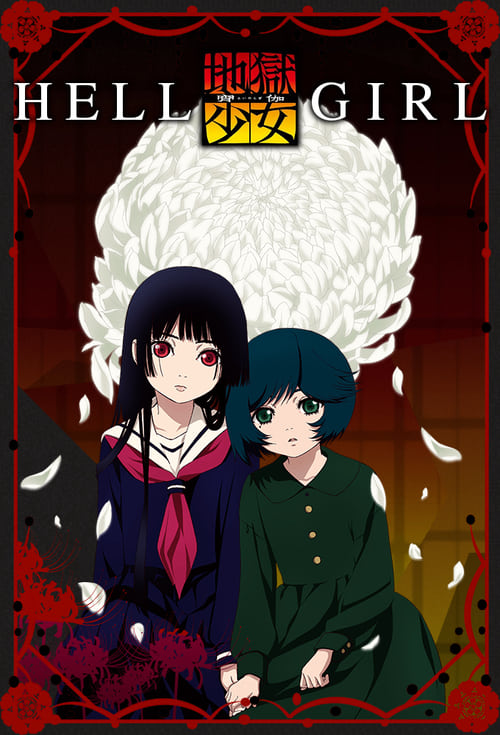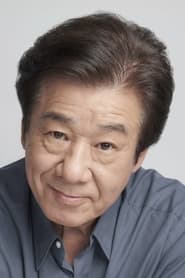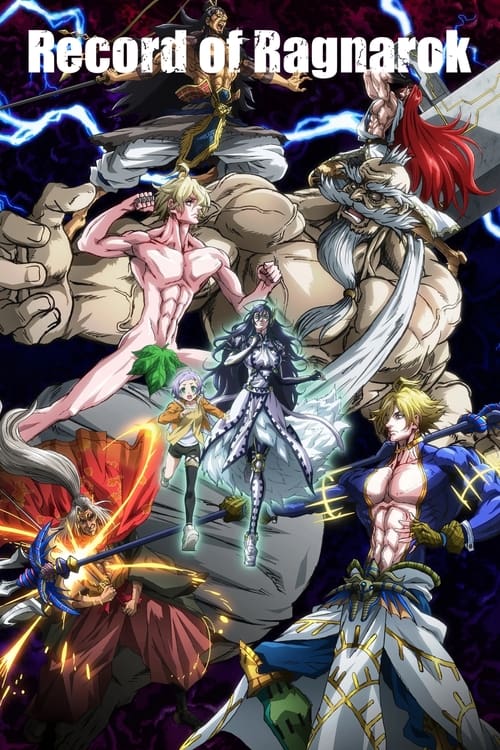
Ask Your Own Question
What is the plot?
In the first episode of "Hell Girl," we are introduced to a high school girl named Ai Enma, who is the titular Hell Girl. The story begins with a young girl named Tsugumi Shibata, who is bullied by her classmates. Tsugumi's emotional turmoil is palpable as she struggles with feelings of isolation and despair. One day, she discovers a mysterious website called "Hell Correspondence," which allows people to send their enemies to Hell. The website is only accessible at midnight, and it is said that if you enter the name of someone you wish to curse, Hell Girl will appear to fulfill your request.
As Tsugumi contemplates using the site, she is torn between her desire for revenge against her bullies and the moral implications of sending someone to Hell. The internal conflict is intense, and she ultimately decides against using the site. However, her friend, who is also a victim of bullying, is pushed to the brink and decides to use the site. Tsugumi witnesses her friend's decision and the subsequent appearance of Ai Enma, who is dressed in traditional Japanese clothing and has an eerie, calm demeanor.
Ai Enma explains the rules of the Hell Correspondence: once a name is entered, the person will be sent to Hell, but the one who made the request will also be cursed to go to Hell after their death. This revelation adds a layer of complexity to the decision-making process. Tsugumi's friend, overwhelmed by her emotions, goes through with the request, and Ai Enma takes her to Hell, leaving Tsugumi in shock and horror.
In the following episodes, we see various characters who are driven by their own grievances and seek out Ai Enma. Each story arc typically follows a similar structure: a character faces severe mistreatment or injustice, they discover the Hell Correspondence, and they grapple with the moral implications of their choice. The emotional weight of each decision is explored in depth, showcasing the pain and suffering that leads them to seek revenge.
One notable episode features a woman named Shoko, who is tormented by her abusive husband. Shoko's desperation leads her to the Hell Correspondence, where she ultimately decides to send her husband to Hell. Ai Enma appears, and the scene is filled with tension as Shoko wrestles with her choice. The moment she enters her husband's name, Ai Enma's expression remains stoic, but the atmosphere is charged with the gravity of the decision. Shoko's husband is taken to Hell, and the aftermath reveals the emotional fallout of her choice, as she is left to deal with the consequences of her actions.
As the series progresses, we learn more about Ai Enma's backstory. She is revealed to have been a victim of cruelty herself, which informs her role as Hell Girl. Her motivations are complex; she is both a servant of vengeance and a tragic figure bound to her own fate. The audience sees glimpses of her past, including her own death and the circumstances that led her to become Hell Girl. These flashbacks are haunting and provide context for her actions throughout the series.
In the final episodes, the narrative builds towards a climax as Tsugumi becomes more involved with Ai Enma. She begins to understand the weight of the choices made by those who seek revenge. Tsugumi's character development is significant; she transforms from a passive observer to someone who actively questions the morality of the Hell Correspondence. Her internal struggle culminates in a confrontation with Ai Enma, where she expresses her desire to break the cycle of vengeance.
The series concludes with a poignant resolution. Tsugumi ultimately decides to reject the path of revenge, choosing instead to seek understanding and healing. This decision is met with a somber acceptance from Ai Enma, who acknowledges Tsugumi's growth. The final scenes depict Ai Enma returning to her solitary existence, continuing her role as Hell Girl, but with a sense of melancholy, as she remains bound to the cycle of vengeance that she cannot escape.
The last moments of the series leave viewers with a haunting image of Ai Enma standing alone, a symbol of the pain and suffering that accompanies the choices made by those who seek her help. The story closes on a note of unresolved tension, emphasizing the ongoing struggle between vengeance and forgiveness.
🔥 Trending TV Shows Now
Browse All TV Shows →What is the ending?
In the ending of "Hell Girl," Ai Enma, the titular Hell Girl, continues her role as a ferryman to the afterlife, helping those who seek revenge by sending their enemies to hell. The series concludes with a poignant reflection on the cycle of vengeance and the emotional toll it takes on both the living and the dead. Ai's own tragic past is revealed, and she remains bound to her duty, embodying the eternal struggle between justice and revenge.
As the final episodes unfold, we see Ai Enma, the enigmatic Hell Girl, continuing her work of delivering souls to hell. The series has built up to this moment, where the emotional weight of her actions and the stories of those she has helped come to a head.
In the first scene of the finale, we find Ai in her usual setting, the eerie, fog-laden realm where she meets those who seek her services. The atmosphere is heavy with a sense of inevitability, as she listens to the latest victim, a woman tormented by her past. The woman, filled with rage and despair, pleads for Ai to take her enemy to hell. Ai, with her calm demeanor, explains the consequences of such a choice, reminding the woman that once the contract is made, there is no turning back.
As the woman signs the contract, we see a flashback of her life, filled with moments of betrayal and pain. The visuals are stark, contrasting her once vibrant life with the darkness that has consumed her. This scene serves to illustrate the emotional turmoil that drives individuals to seek revenge, highlighting the desperation that leads them to Ai.
In the next scene, we witness the aftermath of the woman's decision. Her enemy is dragged into the depths of hell, screaming in terror. The visuals are haunting, with dark, swirling shadows enveloping the victim as they are taken away. Ai watches impassively, her expression revealing little, but her eyes betray a flicker of sadness. This moment encapsulates the series' exploration of the cost of vengeance, as the woman feels a momentary sense of relief, only to be left with the weight of her actions.
The narrative then shifts to Ai's own backstory, revealing her tragic past. We see glimpses of her life before becoming Hell Girl, filled with warmth and love, which is abruptly shattered by betrayal and loss. The scenes are poignant, showcasing her transformation from a hopeful girl to the cold ferryman of souls. This backstory is crucial, as it provides context for Ai's motivations and the burden she carries.
As the series nears its conclusion, we see Ai interacting with her companions, the enigmatic Wanyuudou, the playful Shijima, and the loyal Hone Onna. Each character reflects on their own roles in the cycle of vengeance, and their conversations reveal a deep sense of camaraderie mixed with sorrow. They understand the weight of Ai's duty and the toll it takes on her soul.
In the final scenes, Ai is confronted by the consequences of her actions. A new character, a young girl seeking revenge for her family's suffering, approaches Ai. The girl's innocence starkly contrasts with the darkness of her request. Ai, faced with the reflection of her own past, hesitates. The emotional conflict is palpable as Ai grapples with the implications of sending another soul to hell.
Ultimately, Ai makes her choice, but it is not without a heavy heart. The girl's enemy is taken, and as the scene unfolds, we see Ai standing alone, surrounded by the fog, a solitary figure burdened by the weight of her eternal duty. The series ends with Ai's expression, a mixture of resignation and sorrow, as she continues her role as Hell Girl, forever bound to the cycle of vengeance.
In the closing moments, the screen fades to black, leaving viewers with a lingering sense of the emotional toll of revenge and the haunting question of whether true justice can ever be achieved. The fate of Ai Enma remains unchanged; she is destined to continue her work, a reminder of the complexities of human emotions and the consequences of our choices.
Is there a post-credit scene?
In the 2005 anime series "Hell Girl," there are no post-credit scenes in the traditional sense that you might find in some other shows or movies. Each episode typically concludes with a brief epilogue that ties up the story of the episode, often featuring Ai Enma, the titular Hell Girl, reflecting on the events that transpired.
These epilogues serve to reinforce the themes of vengeance and the moral dilemmas faced by the characters who seek her services. They often leave viewers with a haunting sense of the consequences of revenge and the cycle of suffering that ensues. The final moments of each episode usually feature Ai in her serene yet somber demeanor, emphasizing her role as a guide to the underworld and the weight of the souls she collects.
Overall, while there are no post-credit scenes, the concluding segments of each episode are designed to linger in the viewer's mind, encapsulating the emotional and philosophical essence of the series.
What is Ai Enma's role in Hell Girl and how does she interact with the people who seek her services?
Ai Enma, known as Hell Girl, is the central character who operates the Hell Correspondence website. When someone is wronged and seeks revenge, they can access this site to summon her. Ai appears as a calm and enigmatic figure, dressed in traditional Japanese attire, with long black hair and red accents. Her interactions with clients are often marked by a sense of detachment; she listens to their grievances and offers them a chance to send their tormentors to hell, but at a steep price: the client must also accept a fate of going to hell when they die. This duality of her role as both a helper and a harbinger of doom creates a complex emotional landscape for her character.
What are the consequences faced by the characters who use the Hell Correspondence service?
Characters who utilize the Hell Correspondence service face dire consequences. Upon sending their tormentor to hell, they are often initially relieved, feeling a sense of justice. However, as the story unfolds, they grapple with the moral implications of their choice. The emotional weight of their decision often leads to regret, guilt, and a realization that their actions have irrevocably altered their lives. Many characters experience a downward spiral, haunted by their choice, and ultimately, they must confront the reality that they too will face eternal damnation.
How does the character of Hajime Shibata evolve throughout the series?
Hajime Shibata is a journalist who becomes increasingly obsessed with uncovering the truth behind Hell Girl and the Hell Correspondence service. Initially skeptical, he is driven by a desire to expose Ai Enma and the dark world she represents. As he investigates, he encounters various clients and their tragic stories, which begin to affect him deeply. His character evolves from a detached observer to someone who empathizes with the pain of others, ultimately leading him to question the morality of revenge and the nature of justice. This internal conflict adds depth to his character as he struggles with his own beliefs and the consequences of his pursuit.
What is the significance of the red thread in Hell Girl?
The red thread is a significant symbol in Hell Girl, representing the connection between the client and their target. When a person decides to use the Hell Correspondence service, they are bound by this red thread, which Ai Enma uses to signify the contract between them. The thread serves as a visual reminder of the irreversible choice they have made, and it often appears in moments of emotional intensity, highlighting the weight of their decision. The red thread also symbolizes fate and the inescapable consequences of one's actions, reinforcing the series' themes of revenge and moral ambiguity.
What are the backstories of Ai Enma and her companions, and how do they influence their actions?
Ai Enma's backstory is tragic; she was a young girl who was wronged and ultimately killed, leading her to become the Hell Girl. Her experiences shape her cold demeanor and her commitment to delivering vengeance to those who seek it. Her companions, including the enigmatic Wanyuudou, the playful Shiro, and the mysterious Hone Onna, each have their own tragic pasts that influence their roles in the series. Wanyuudou, for instance, was once a human who was betrayed, and his desire for revenge fuels his loyalty to Ai. Each character's backstory adds layers to their motivations and actions, creating a rich tapestry of interconnected fates that drive the narrative forward.
Is this family friendly?
"Hell Girl," produced in 2005, is not considered family-friendly due to its mature themes and content. The show delves into dark and complex emotional issues, often exploring themes of revenge, suffering, and the consequences of one's actions. Here are some potentially objectionable or upsetting aspects that may affect children or sensitive viewers:
-
Death and Violence: The series frequently depicts death, often in graphic or unsettling ways, as characters seek revenge through the titular character, Ai Enma, who sends souls to hell.
-
Moral Ambiguity: The show presents morally complex situations where characters grapple with their desires for vengeance, leading to emotional turmoil and ethical dilemmas.
-
Psychological Distress: Many episodes explore deep emotional pain, including bullying, betrayal, and loss, which can be distressing for younger viewers.
-
Supernatural Elements: The presence of supernatural themes, such as the concept of hell and the afterlife, may be frightening or confusing for children.
-
Dark Atmosphere: The overall tone of the series is somber and melancholic, often leaving viewers with a sense of unease.
-
Adult Themes: Topics such as betrayal, infidelity, and the darker sides of human nature are explored, which may not be suitable for younger audiences.
Due to these elements, "Hell Girl" is recommended for a mature audience and may not be appropriate for children or sensitive viewers.



















